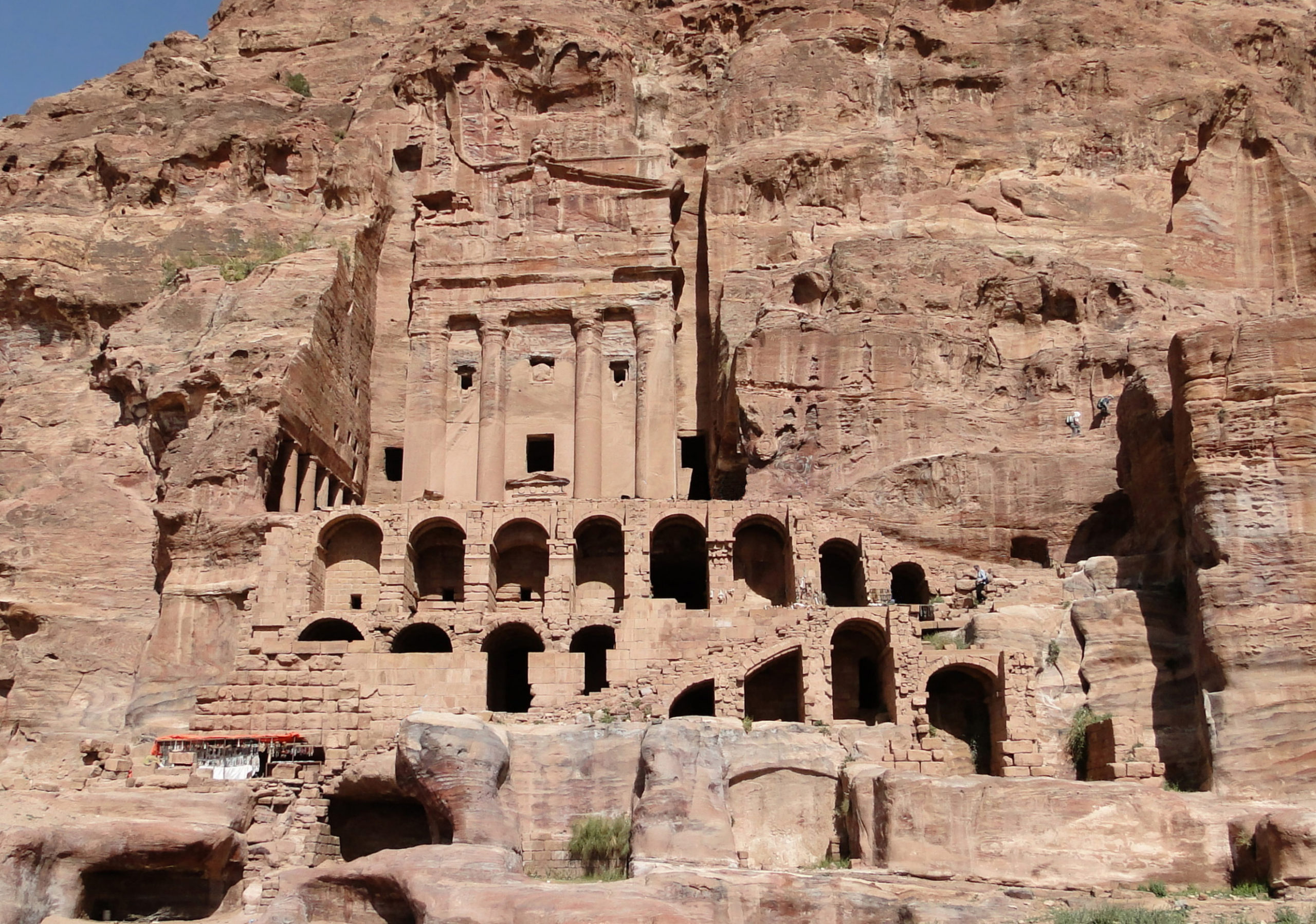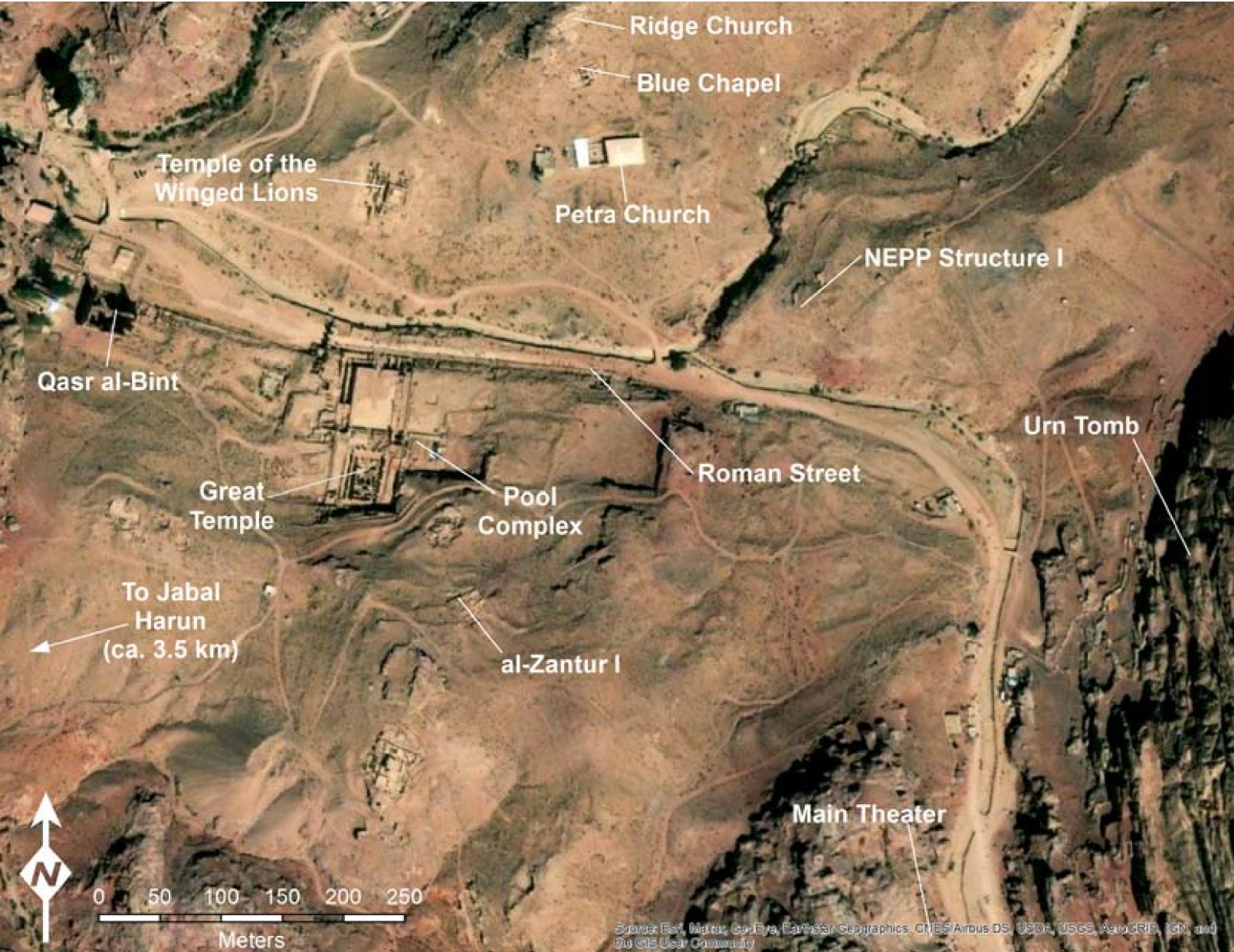Petra - Urn Tomb
 The Urn Tomb
The Urn TombBernard Gagnon - Wikipedia - CC BY-SA 3.0
| Transliterated Name | Source | Name |
|---|---|---|
| Urn Tomb | ||
| al-Mahkamah | Arabic | الءماهكاماه |
The Urn Tomb is located on the East Ridge (aka East Cliff) of Jabal Khubtha. It is thought to be a tomb for a Nabataean King such as Malchus II or Aretas IV.
- from Petra - Introduction - click link to open new tab
- Location Map from Jones (2021)

 Figure 2
Figure 2
Map of Petra with the locations of major excavations marked
Jones (2021)
Basemap: Esri, Maxar, Earthstar Geographics, USDA FSA, USGS, Aerogrid, IGN, IGP, and the GIS User Community - Urn Tomb in Google Earth
Jones (2021) argues that al-Zantur I Spatromisch II ceramics, rather than dating from 363 CE - 419 CE, should date to at least a century later. If true, this would negate archaeoseismic evidence for an earthquake reported in 419 CE (i.e. the Monaxius and Plinta Quake) at ez-Zantur and other sites in Petra such as in a structure outside the Urn Tomb, and in Structure I of the NEPP Project. Jones (2021) suggests instead that the causitive earthquake was more likely the late 6th century CE Inscription At Areopolis Quake. Jones (2021) provides a discussion below:
Within Petra, the 418/419 earthquake has been suggested as the cause for the destruction of three structures:At the Urn Tomb, a 363 earthquake destruction has been suggested for a cave below the tomb (Zayadine 1974: 138) as well as House II, which was partially rebuilt afterwards and by the 6th century was being `used as a quarry' (Zeitler 1993: 256-57). Taking this quarrying as evidence for a 5th century abandonment of House II, Kolb (2000: 230; 2007: 154-55) suggests a second destruction in the 418/419 earthquake, primarily based on analogy to al-Zantur I. As only a preliminary report has appeared for House II, it is not possible to evaluate the archaeological evidence for this attribution, but a 5th century abandonment of House II may instead be related to the modification of the Urn Tomb for use as a church in 446 (Bikai 2002: 271).
- al-Zantur I, specifically the end of Bauphase Spatromisch II
- one of the structures outside of the Urn Tomb, House II
- North-Eastern Petra Project (NEPP) Structure I
